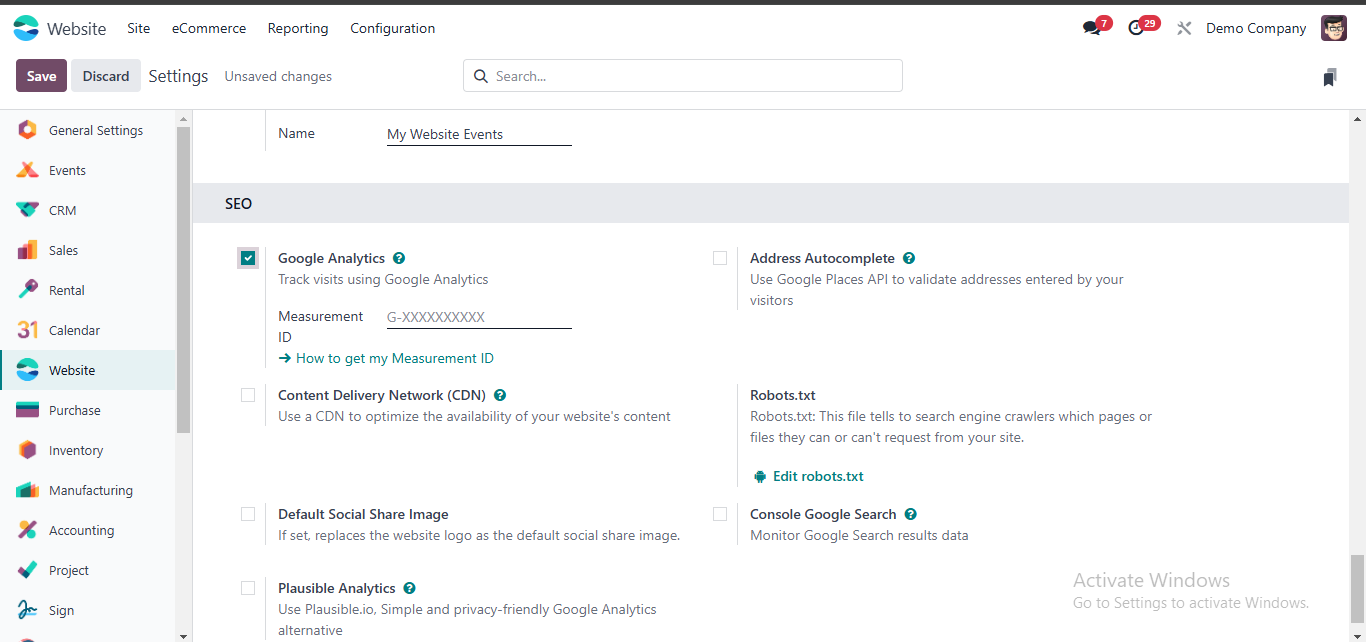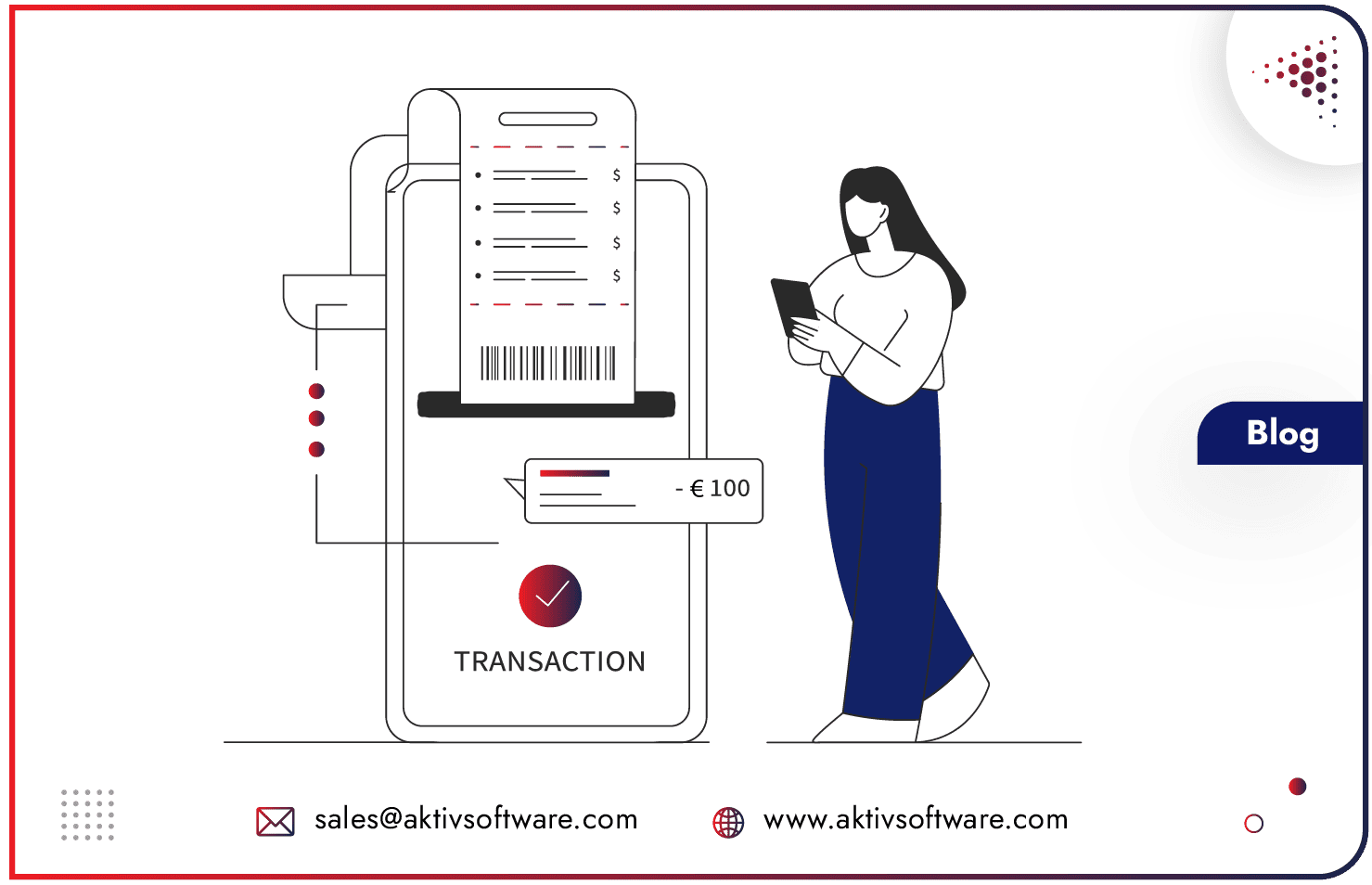Imagine having just the right set of products addressing your customers’ needs. It seems like hitting that market-consumer sweet spot! But what if your amazing product is sitting in the shadows, unnoticed by your target customers?
This often happens when a website isn’t optimized for search engines. Despite having the perfect offering, poor SEO configuration can hinder your visibility, leaving your audience unaware of your product/offering.
Search Engine Optimization (SEO) is crucial for ensuring your website ranks high on search engines and attracts the right audience. This blog will walk you through the essential Odoo Website SEO configuration and how to leverage them effectively.
Note: This guide doesn’t cover the functional aspects of Search Engine Optimization.
Steps to Perform Odoo Website SEO Configuration
1. WebPage Creation
Titles, meta descriptions, and keywords help search engines understand your content. Titles grab attention, meta descriptions improve click-through rates, and keywords connect your content to user searches.
- Title: Craft a concise and compelling title with relevant keywords.
- Meta Description: Write a descriptive summary (155–160 characters) that includes primary keywords to entice clicks from search results.
- Keywords: Use targeted keywords that align with your content and audience.
- Heading Tags: Structure your content using H1, H2, and H3 tags to improve readability and SEO.
2. Image Optimization
Images enhance user experience but can slow down your website if not optimized. Adding alt text makes images accessible and improves your SEO by helping search engines index them. Use descriptive names and formats for better clarity and engagement.
- Double-click on the placed image.
- Go to the Customize section.
- Add the image name, description, and format.
- Enhance visual appeal with animation options.
3. Link Tracker
Tracking URL performance while running campaigns on third-party platforms is key to understanding user behavior. Odoo Website SEO features have link tracker that lets you measure engagement on specific links, helping you refine your strategies for higher conversions. To activate it:
Navigate to Site > This Page (Link Tracker) to track clicks and measure engagement.
4. URL Optimization
SEO-friendly URLs improve rankings and usability. They should be short, descriptive, and include keywords. Odoo Website module allows you to easily check and edit URLs to ensure they are optimized for both search engines and users.
- Go to Site > Pages to:
- Check if the page URL is indexed.
- Confirm it is SEO-optimized and published.
 5. URL Redirection
5. URL Redirection
Redirecting outdated or broken links prevents loss of SEO value and enhances user experience. This ensures visitors reach the right pages without encountering errors. Set up URL redirects in Odoo to avoid broken links and maintain SEO value:
- Go to Configuration > Redirects to manage your URL redirection settings.
6. Multi-Language Configuration
Offering content in multiple languages helps you reach a broader audience. Odoo Website SEO has multi-language features, ensuring inclusivity and improved SEO for different regions. Expand your audience by enabling multiple languages:
- Navigate to Configuration > Add Languages or Install Languages to set up and manage multilingual options.
7. Schema Markup
Schema markup is a form of structured data that helps search engines understand your content better. It enhances search result appearances, such as showing ratings or FAQs, leading to higher click-through rates.
You can perform Schema Markup in two ways:
- Use an add-on module from the Odoo App Store for automated schema integration.
- Alternatively, work with a developer to add schema manually. You can generate schema using third-party tools or websites.
8. Sitemap
A sitemap is a blueprint of your website that helps search engines index your pages effectively. It ensures that all important pages are discoverable and ranked appropriately.
Generate and submit a sitemap to improve site indexing. This can typically be configured within Odoo’s Website settings or by using additional modules.
9. Google Analytics Configuration
Integrating Google Analytics with Odoo SEO, it provides insights into user behavior, helping you make data-driven decisions to improve your SEO efforts. To configure:
- Obtain your tracking ID from Google Analytics.
- Place it in the Configuration section under GA Analytics in the Website Module.
If you are still confused about Odoo Website SEO configuration, we have SEO & Odoo functional experts to guide you. Schedule a consultation call.



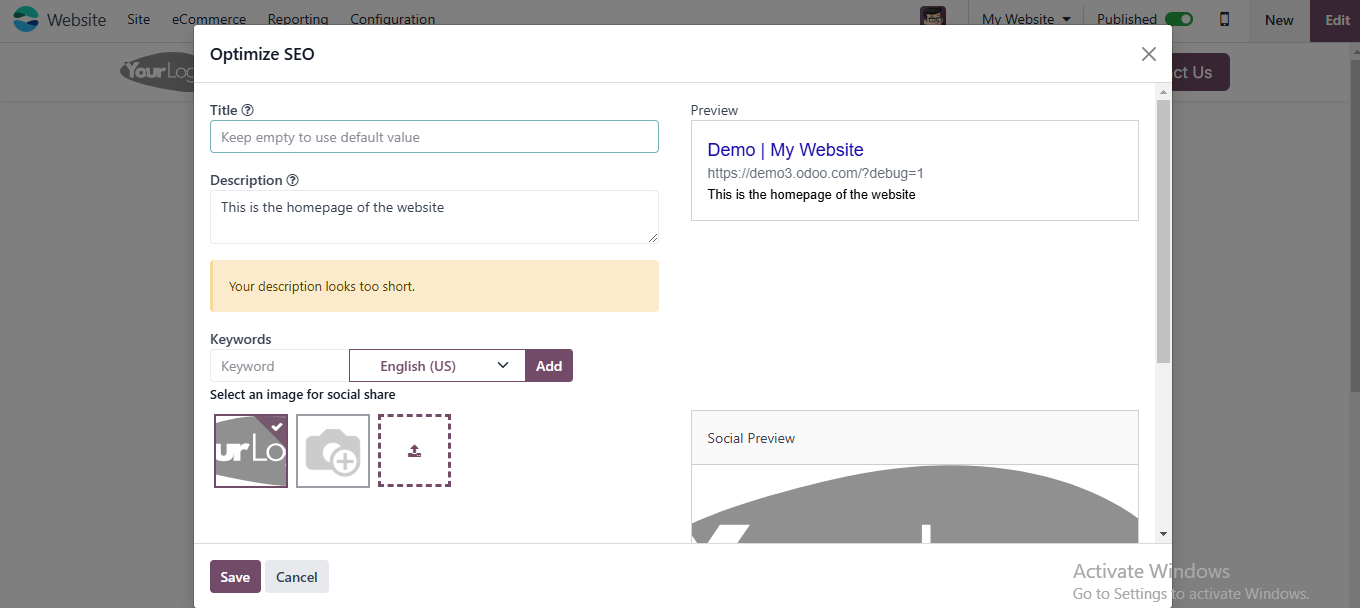
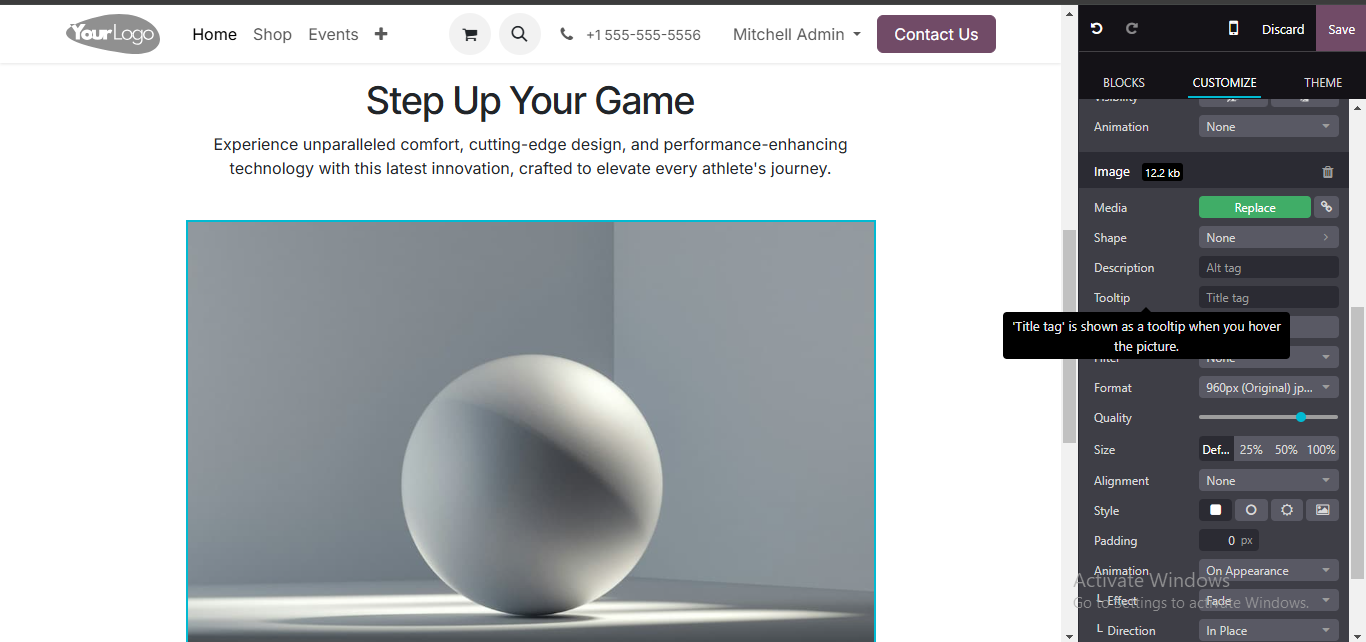
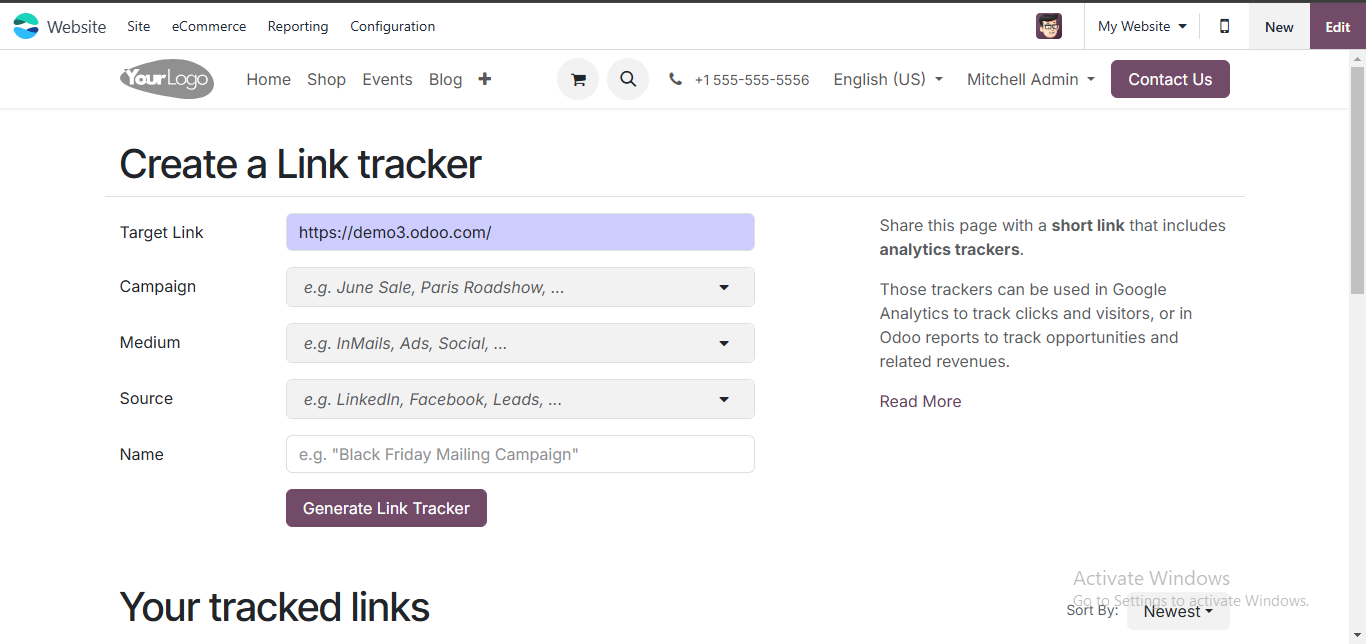
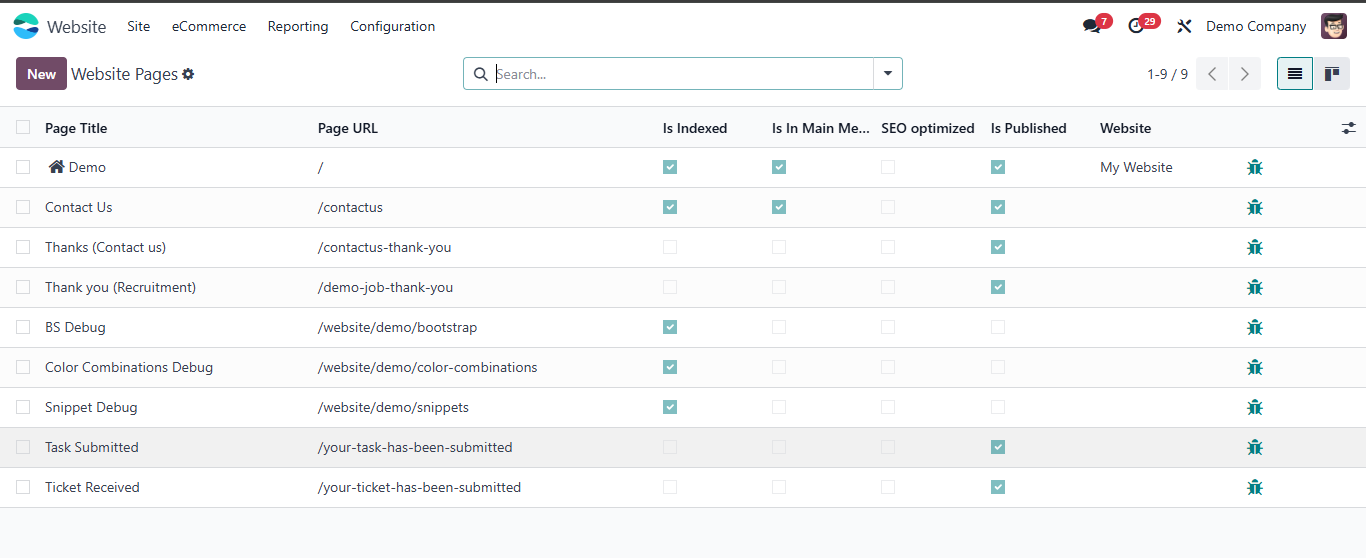 5. URL Redirection
5. URL Redirection
